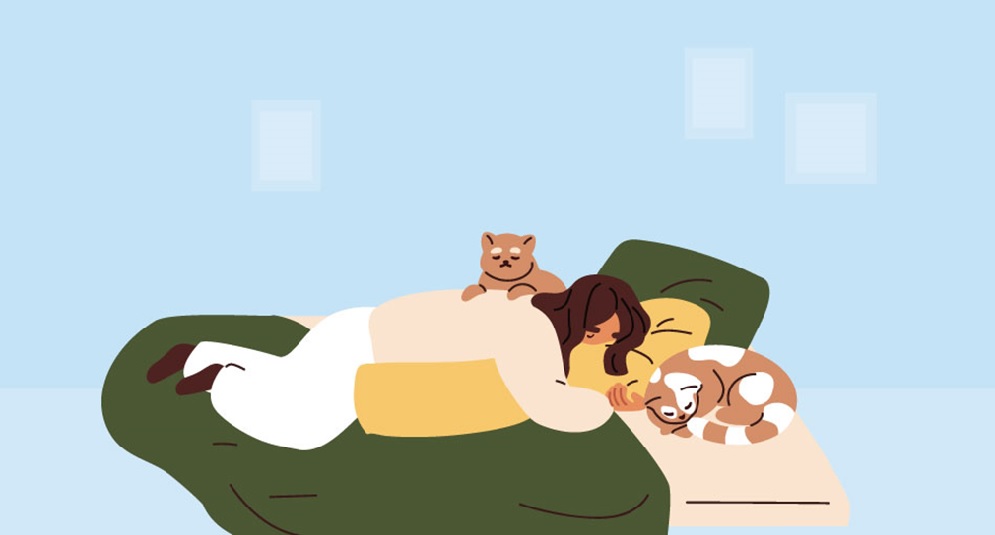
Tips and Strategies for Designing a Space that Promotes Rest and Relaxation | Creating a Supportive Sleep Environment

In today's fast-paced world, a good night's sleep is more important than ever. The demands of modern life often leave us tossing and turning in bed, searching for elusive rest. However, one often-overlooked aspect of improving your sleep quality is your sleep environment. By crafting a space that promotes relaxation and rest, you can significantly enhance your chances of enjoying rejuvenating sleep.
In this article, we will explore the relationship between our diurnal nature, the importance of soothing light, the significance of a sleep routine and good sleep hygiene, the value of relaxation activities, and how to set up your space for rest and relaxation.
- Humans Have Evolved to Be Diurnal
- The Importance of Soothing Light
- Establish a Sleep Routine
- Prioritise Sleep Hygiene
- Incorporate Relaxation Activities
- Setting Up Your Space for Rest
- Tips for Relaxing Before Bed
Understanding the natural rhythms of our bodies is crucial when designing a sleep-conducive environment. Humans are diurnal creatures, which means we are naturally inclined to be awake during the day and asleep during the night. Our bodies have evolved over thousands of years to align with the Earth's day-night cycle, also known as the circadian rhythm.
In the past, this rhythm ensured our safety. Being active during daylight hours helped us forage for food, avoid predators, and perform essential tasks. At night, we retreated to a safe shelter to rest and recover. Even though we now have artificial lighting and technology that allows us to be active at all hours, our biological clock still craves a regular sleep-wake cycle that mirrors the natural day-night pattern.
One of the key elements in regulating our circadian rhythm is exposure to light. Light is a powerful signal to our bodies that helps regulate the production of melatonin, a hormone responsible for promoting sleep. Here's how it works:
- Morning Light: Exposure to natural daylight in the morning helps suppress the production of melatonin, signaling to your body that it's time to wake up and be alert. Spend time outdoors or open your curtains to allow natural light into your bedroom upon waking.
- Evening Light: Conversely, exposure to bright artificial light, especially from screens like smartphones, tablets, and televisions, can hinder melatonin production in the evening. This makes it more challenging to fall asleep. Consider limiting screen time at least an hour before bedtime to allow your body to prepare for sleep.
- Soothing Light: As bedtime approaches, opt for softer, dimmer lighting in your bedroom. Soft, warm-colored bulbs or candles can create a calming atmosphere and signal to your body that it's time to wind down.
Mental Health Survey 2023 - Read the comprehensive report here
Consistency is key when it comes to improving your sleep quality. Creating a regular sleep routine helps train your body to recognize when it's time to sleep and when it's time to wake up. Here are some tips for establishing a sleep routine:
- Set a Consistent Bedtime: Try to go to bed and wake up at the same time every day, even on weekends. This helps regulate your circadian rhythm.
- Create a Wind-Down Routine: Develop a pre-sleep ritual that signals to your body that it's time to relax. This might include activities like reading, taking a warm bath, or practising relaxation exercises.
Good sleep hygiene involves adopting habits and behaviours that promote healthy sleep. Here are some essential sleep hygiene practices:
- Limit Caffeine and Alcohol: Avoid consuming caffeine and alcohol close to bedtime, as they can disrupt your sleep.
- Create a Comfortable Sleep Environment: Ensure your bedroom is conducive to sleep by keeping it cool, dark, and quiet. Invest in a comfortable mattress and pillows.
- Limit Naps: While short power naps can be refreshing, avoid long daytime naps, as they can interfere with nighttime sleep.
Relaxation activities can help calm your mind and prepare your body for sleep. Consider integrating the following practices into your evening routine:
- Deep Breathing: Practice deep, slow breathing exercises to reduce stress and promote relaxation.
- Yoga or Stretching: Gentle yoga or stretching routines can help release tension in your body.
- Meditation: Engage in mindfulness meditation to quiet your mind and alleviate anxiety.
Manage Your Mental Health Better - Download The Mpower App
The physical environment of your bedroom can significantly impact your sleep quality. Consider the following tips when designing your sleep space:
- Declutter: A clutter-free environment can help create a sense of calm and order.
- Comfortable Bedding: Invest in high-quality, comfortable bedding that promotes restful sleep.
- Use Calming Colors: Paint your bedroom in calming colors like blues, greens, or soft neutrals that promote relaxation.
In addition to creating an ideal sleep environment, here are some tips for relaxing before bedtime:
- Read a Book: Reading a physical book (not an e-reader) can be a great way to unwind.
- Listen to Soothing Music: Gentle, calming music can help you relax and prepare for sleep.
- Practice Progressive Muscle Relaxation: This involves tensing and then relaxing each muscle group in your body, starting from your toes and working your way up.
In conclusion, crafting a supportive sleep environment is essential for promoting rest and relaxation. By understanding our diurnal nature, recognizing the importance of soothing light, establishing a sleep routine, practising good sleep hygiene, incorporating relaxation activities, and setting up our space for rest, we can take significant steps toward achieving the rejuvenating sleep our bodies and minds need. Remember that improving your sleep environment is an ongoing process, so be patient with yourself as you make adjustments and prioritise your well-being. Sweet dreams!
image credit : freepik

How Psychotherapy Helps in Late-Life Depression And Anxiety: A Path to Healing, Hope, And Healthy Aging
How Social Isolation Impacts Geriatric Mental Health? How to Reverse It?

